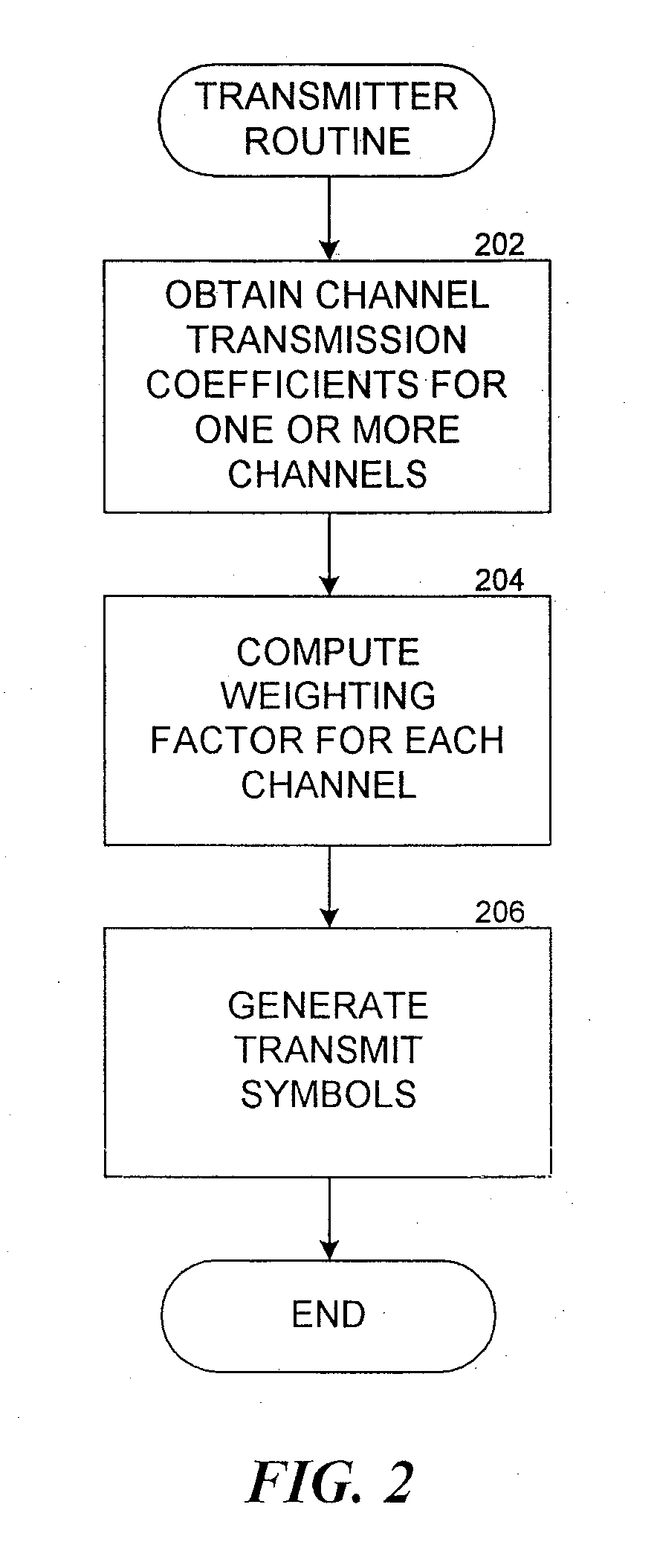Maximum ratio transmission
a maximum ratio and transmission technology, applied in diversity/multi-antenna systems, baseband system details, polarisation/directional diversity, etc., can solve the problems of adverse propagation effect, wireless communications system suffer multi-path fading, all wireless communications services are subject to the vagaries of propagation environment, etc., to achieve the effect of improving performan
- Summary
- Abstract
- Description
- Claims
- Application Information
AI Technical Summary
Problems solved by technology
Method used
Image
Examples
Embodiment Construction
[0010]FIG. 1 depicts a system which comprises K antennas for transmission and L antennas for reception. The channel between the transmit antennas and the receive antennas can be modeled by K×L statistically-independent coefficients, as show in FIG. 1. It can conveniently be represented in matrix notation by H=(h11⋯⋯⋯h1K⋮⋰ ⋮⋮ ⋰ ⋮⋮ ⋰⋮hL 1⋯⋯⋯hLK)=(h1⋮⋮⋮hL)(1)
where the entry hpk represents the coefficient for the channel between transmit antenna k and receiver antenna p. It is assumed that the channel coefficients are available to both the transmitter and receiver through some means, such as through a training session that employs pilot signals sent individually through each transmitting antenna (see block 202 of FIG. 2 and block 302 of FIG. 3). Since obtaining these coefficients is well known and does not form a part of this invention additional exposition of the process of obtaining the coefficients is deemed not necessary.
[0011] The system model shown in FIG. 1 and also in th...
PUM
 Login to View More
Login to View More Abstract
Description
Claims
Application Information
 Login to View More
Login to View More - R&D
- Intellectual Property
- Life Sciences
- Materials
- Tech Scout
- Unparalleled Data Quality
- Higher Quality Content
- 60% Fewer Hallucinations
Browse by: Latest US Patents, China's latest patents, Technical Efficacy Thesaurus, Application Domain, Technology Topic, Popular Technical Reports.
© 2025 PatSnap. All rights reserved.Legal|Privacy policy|Modern Slavery Act Transparency Statement|Sitemap|About US| Contact US: help@patsnap.com



